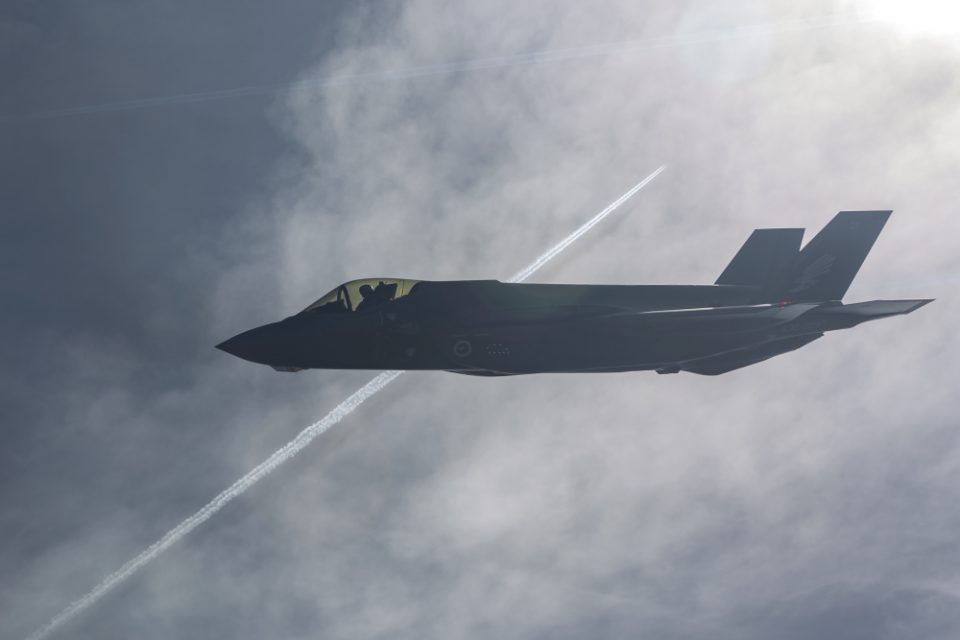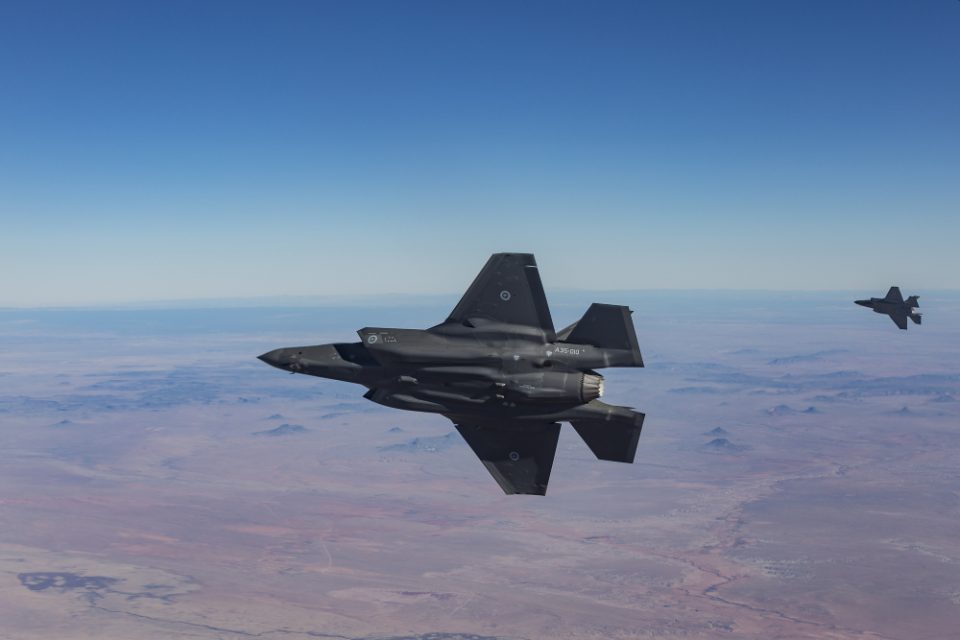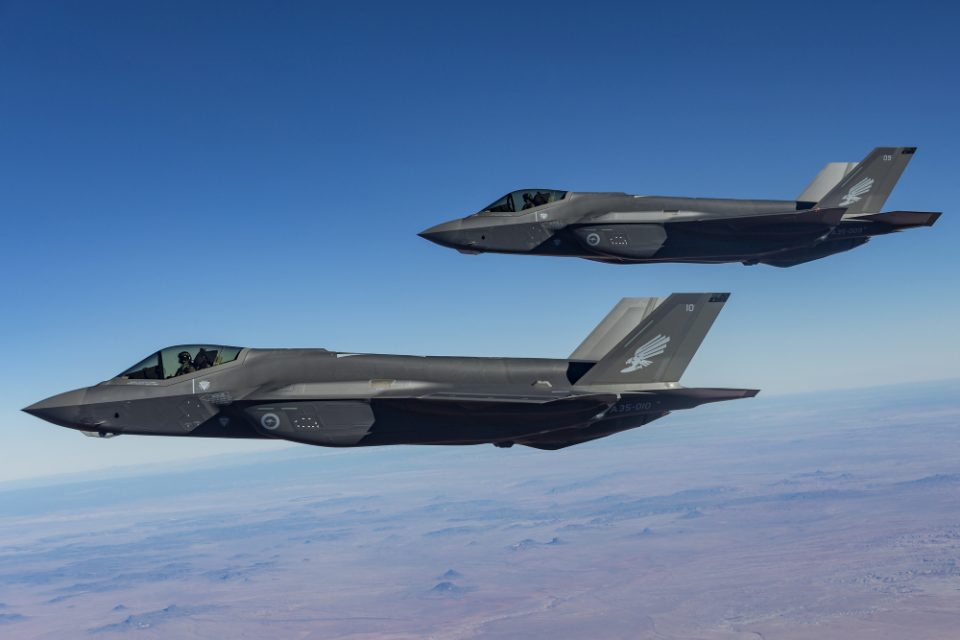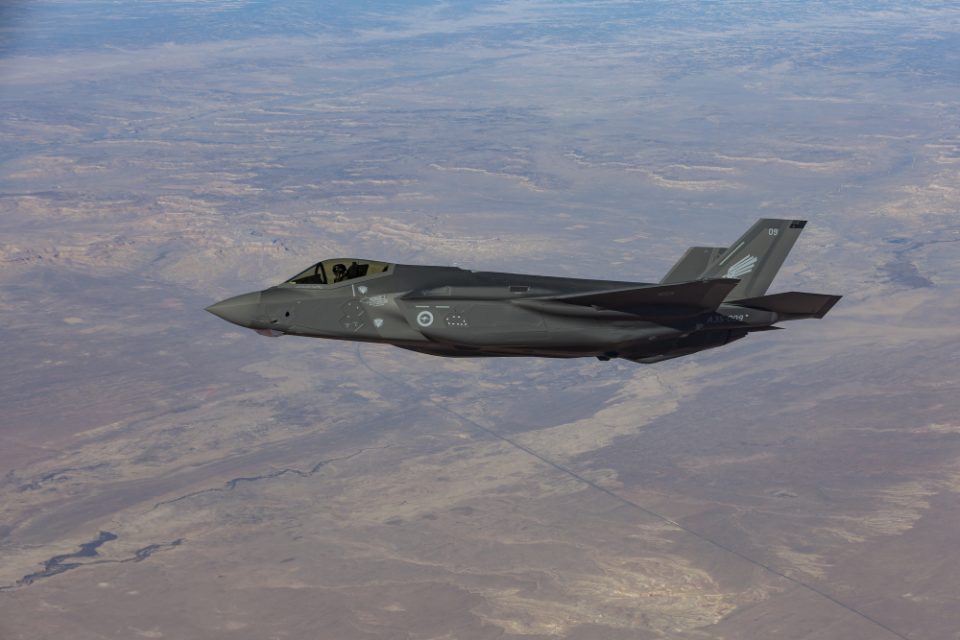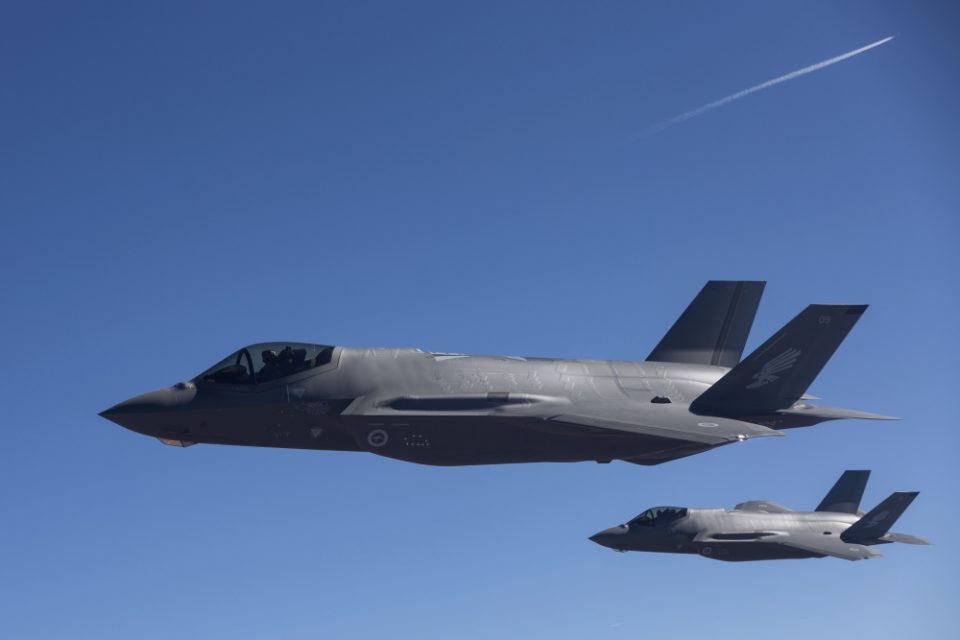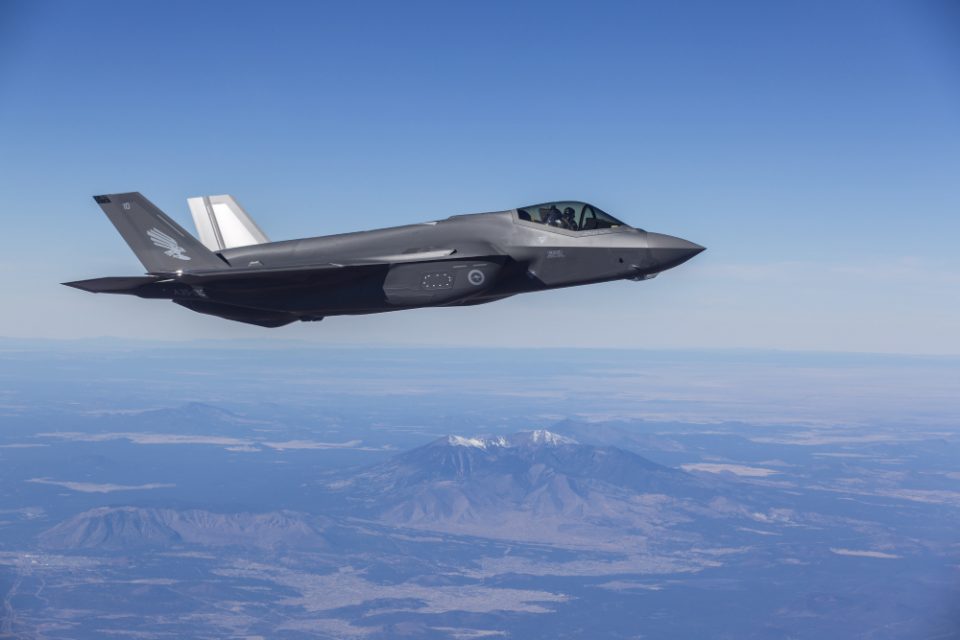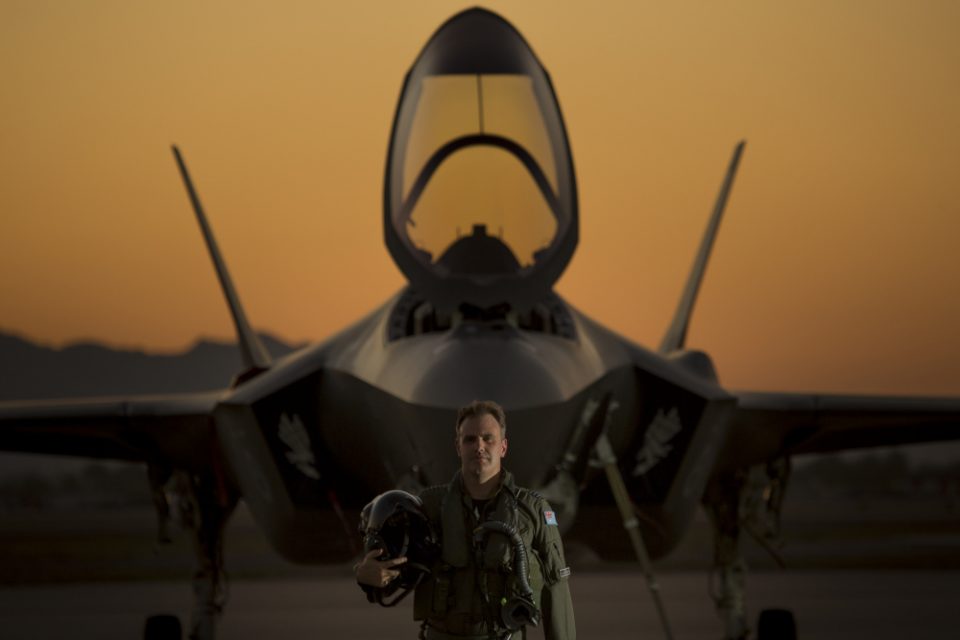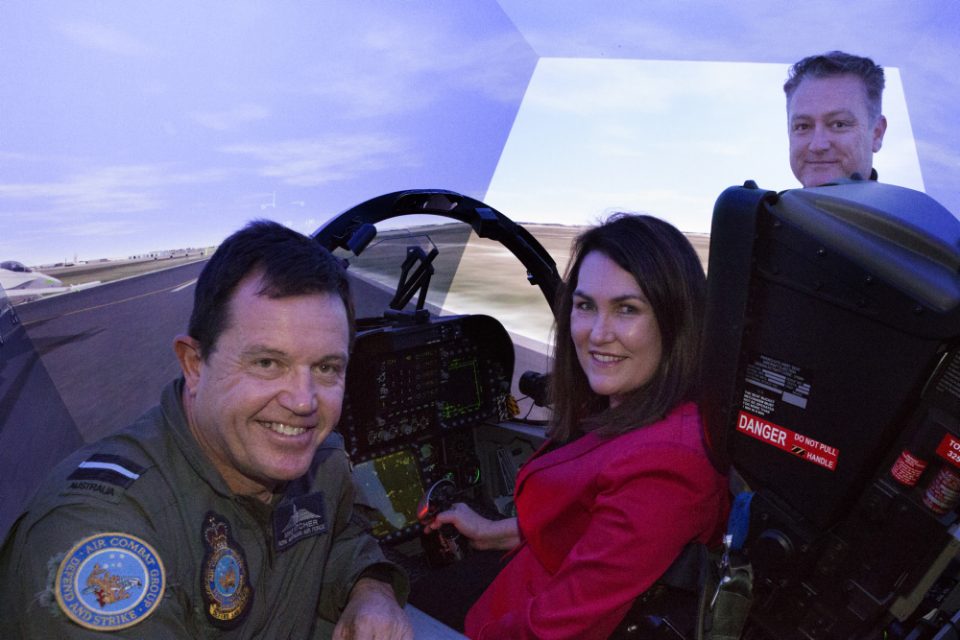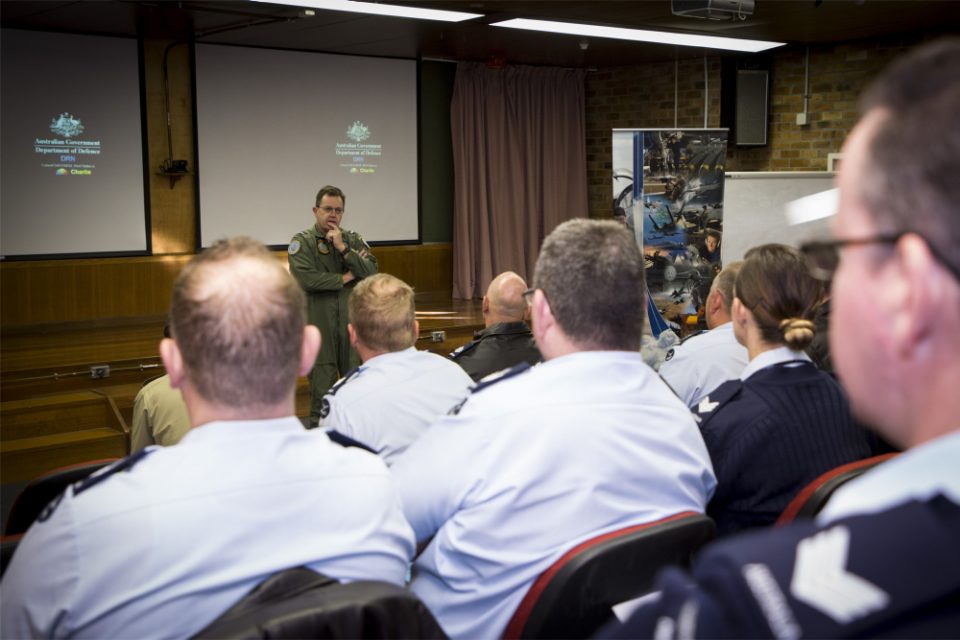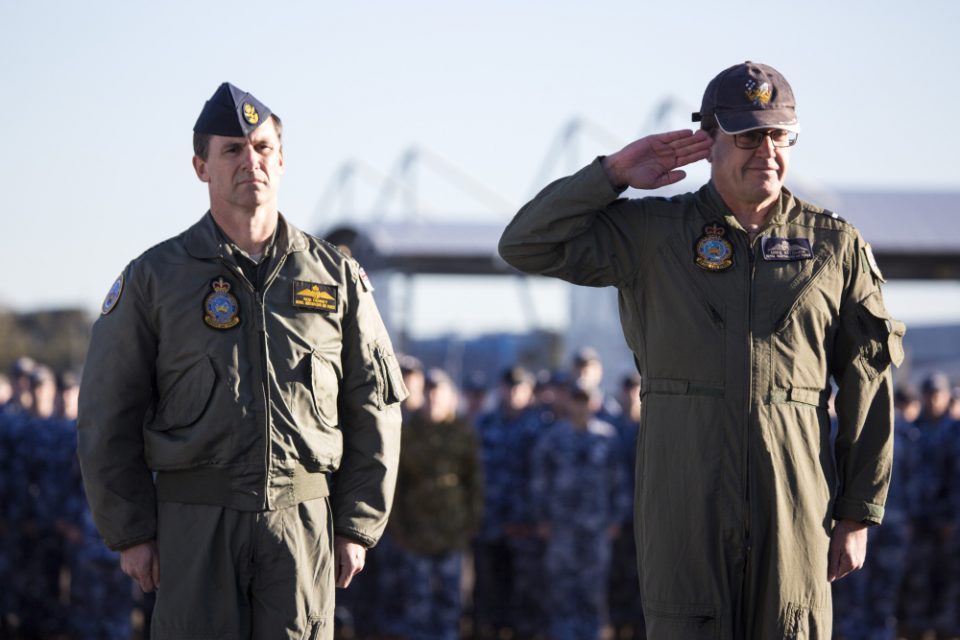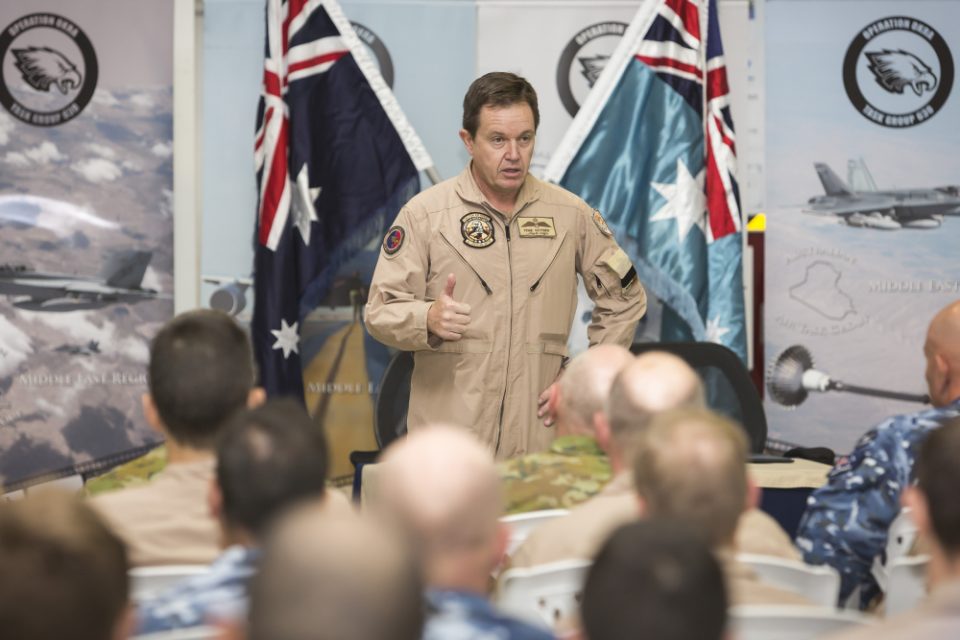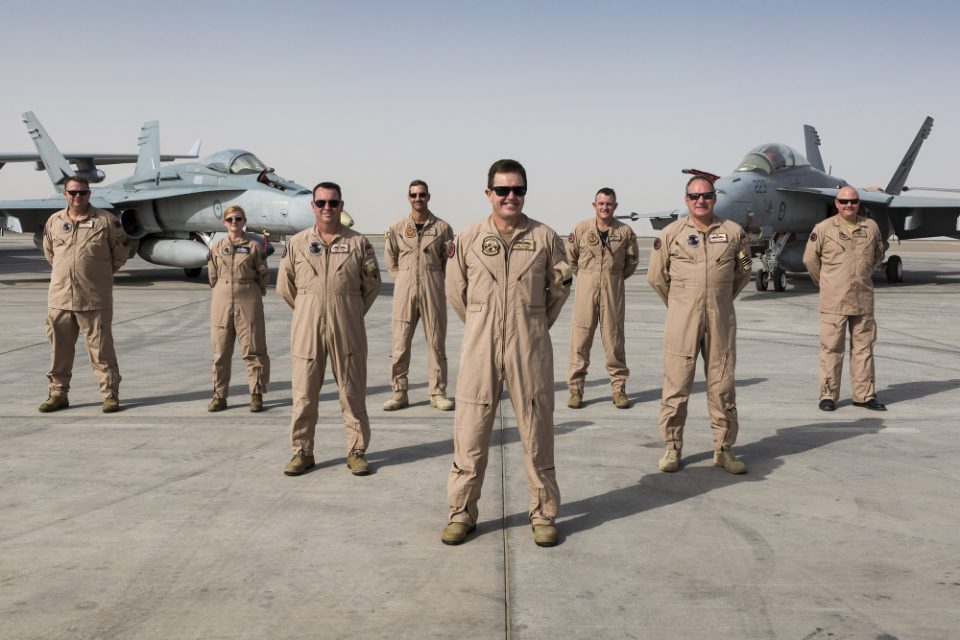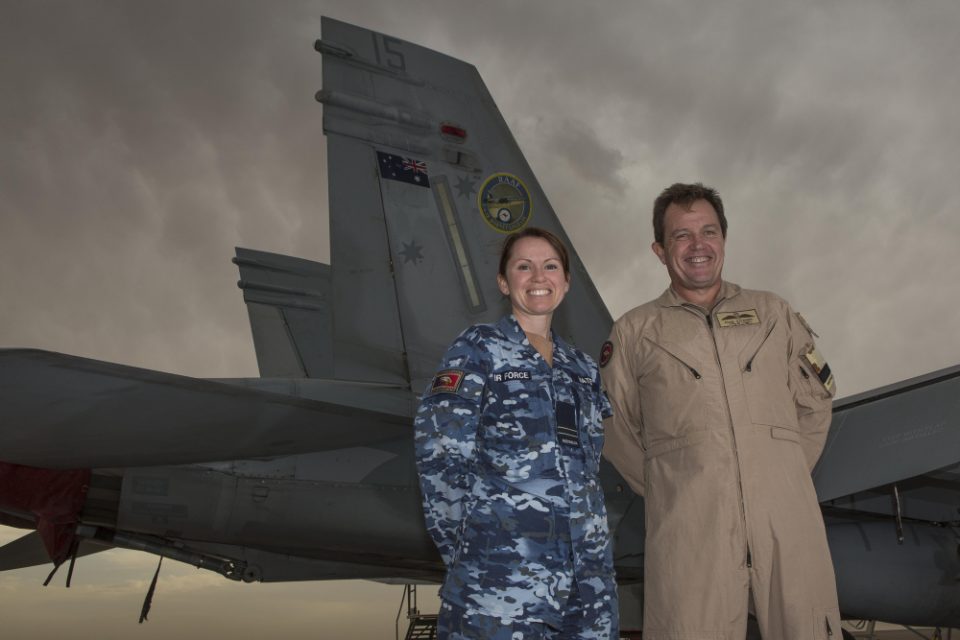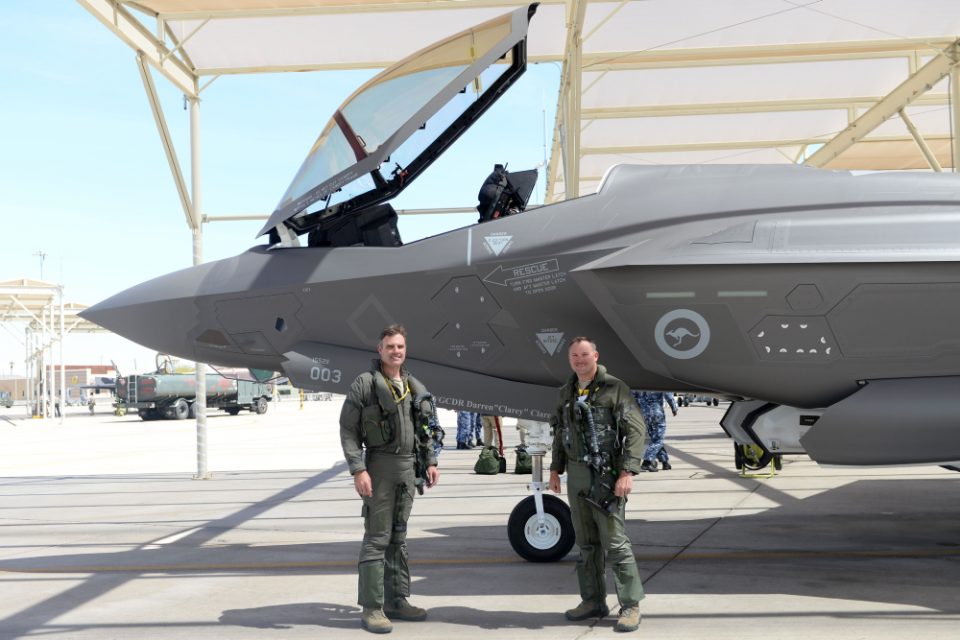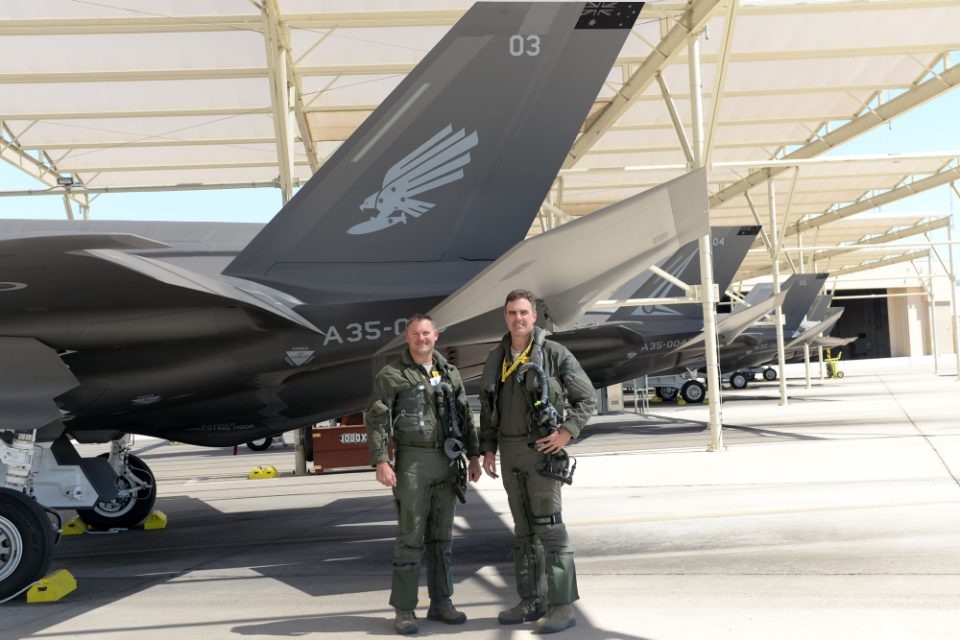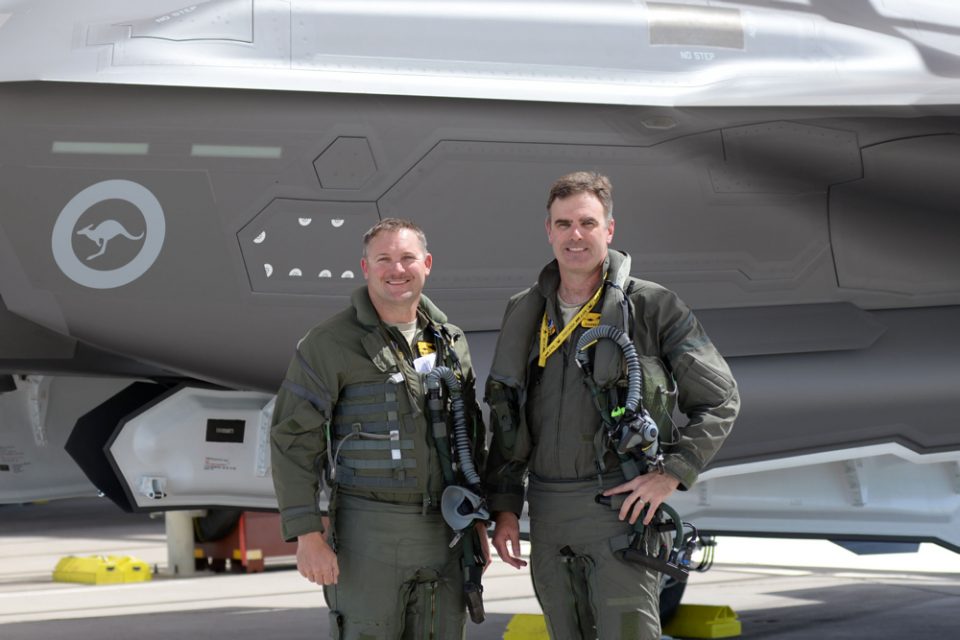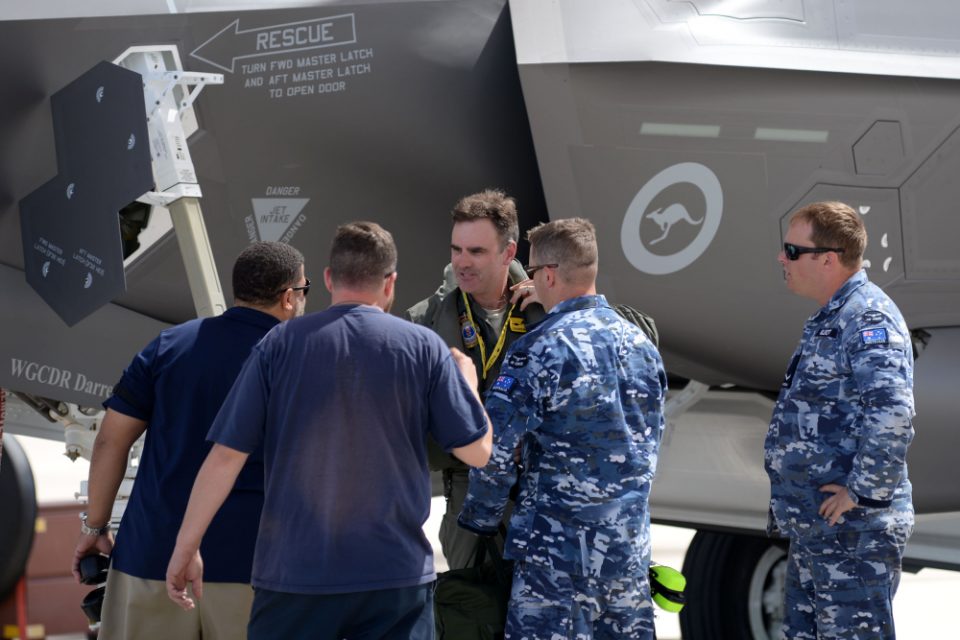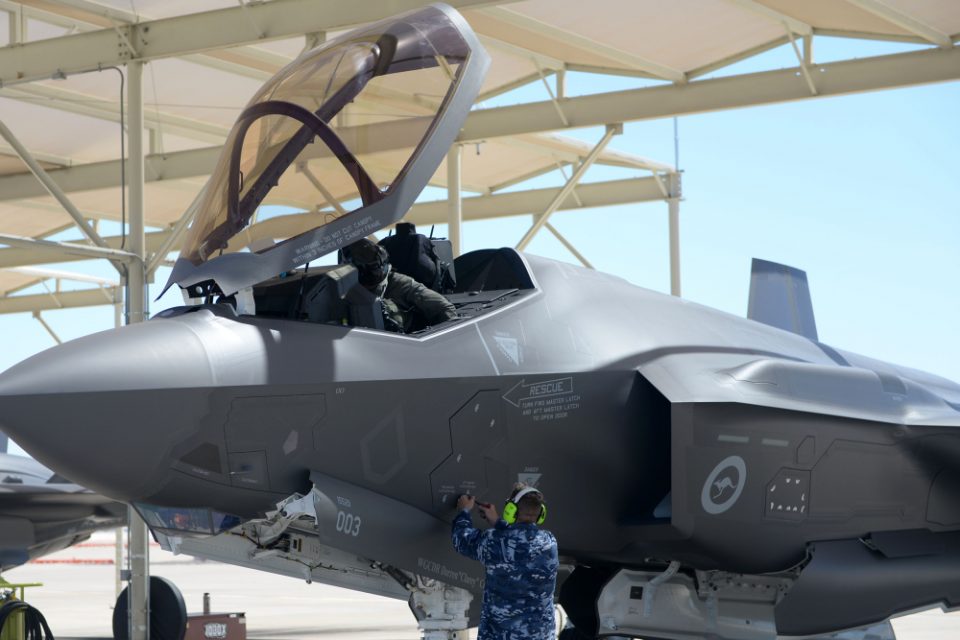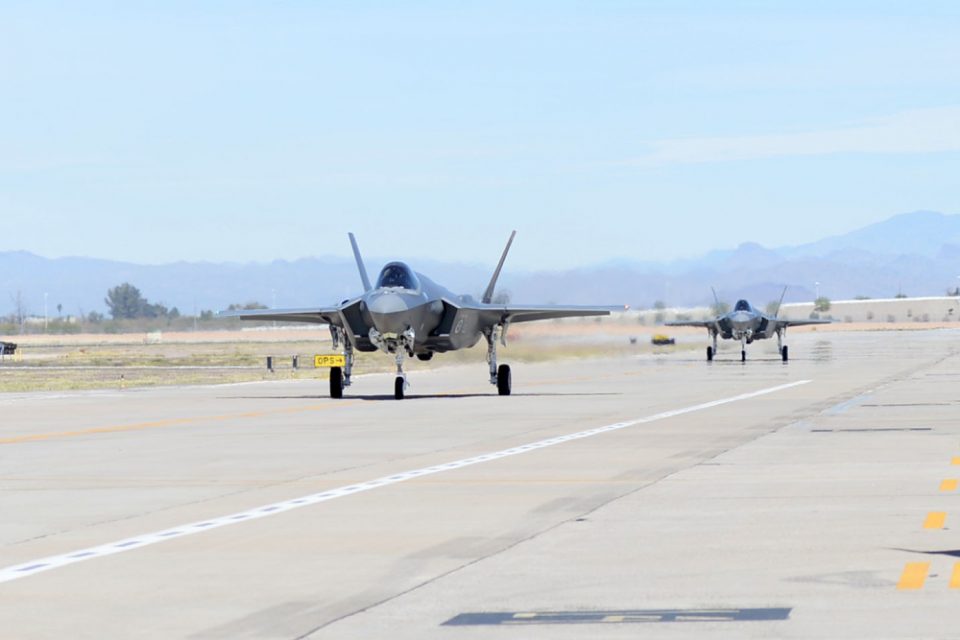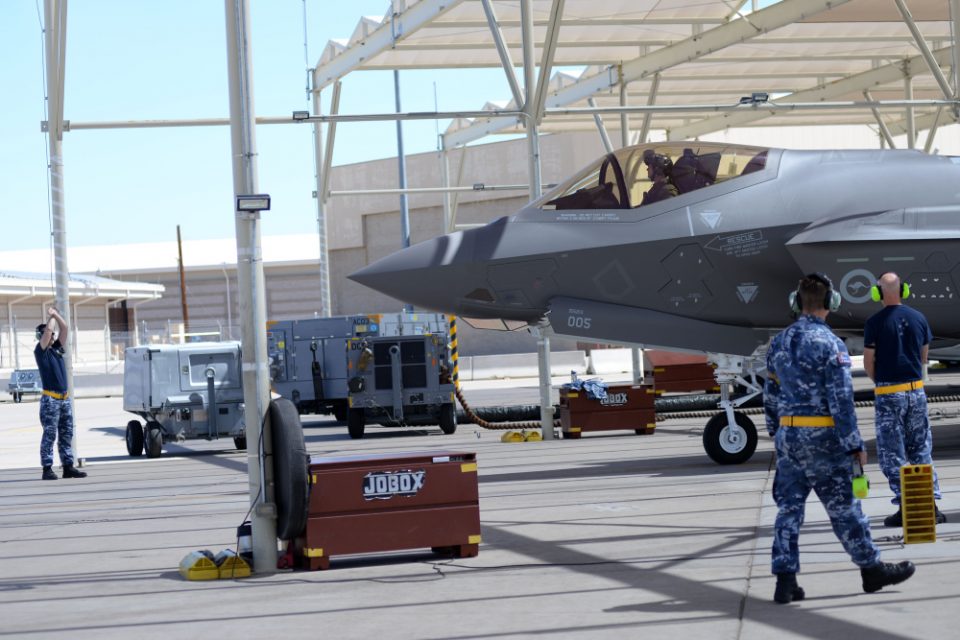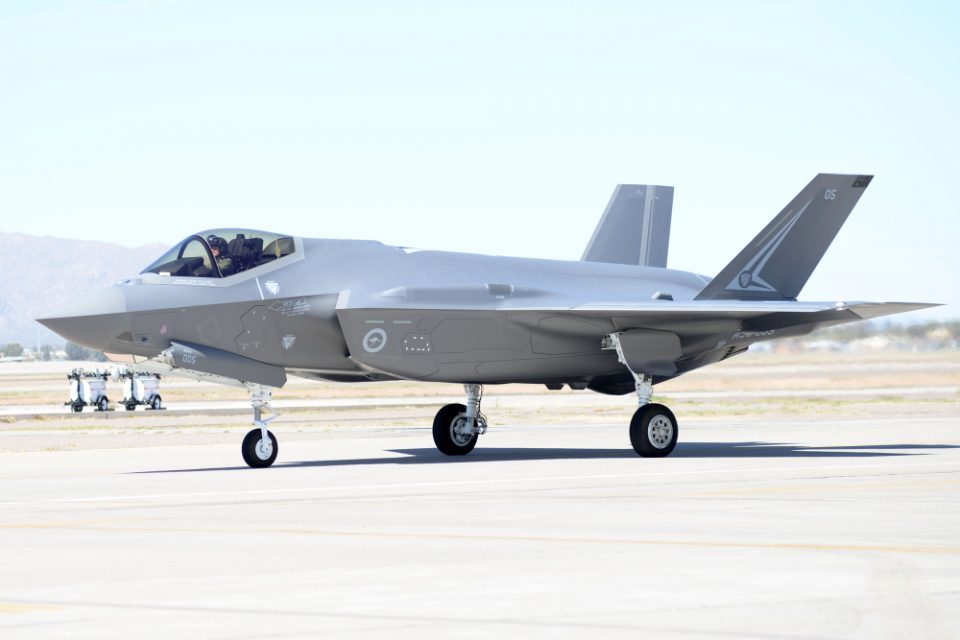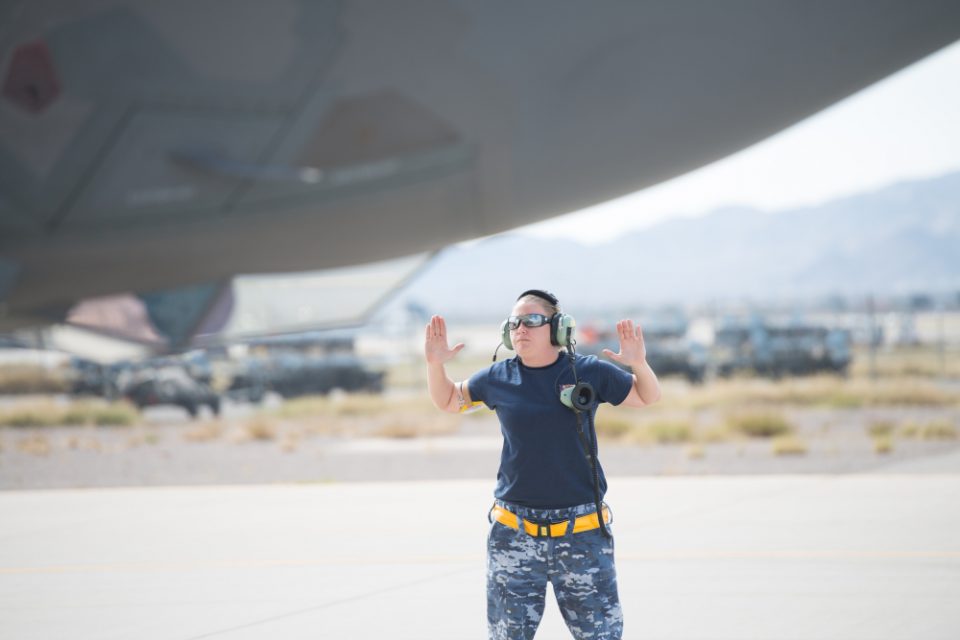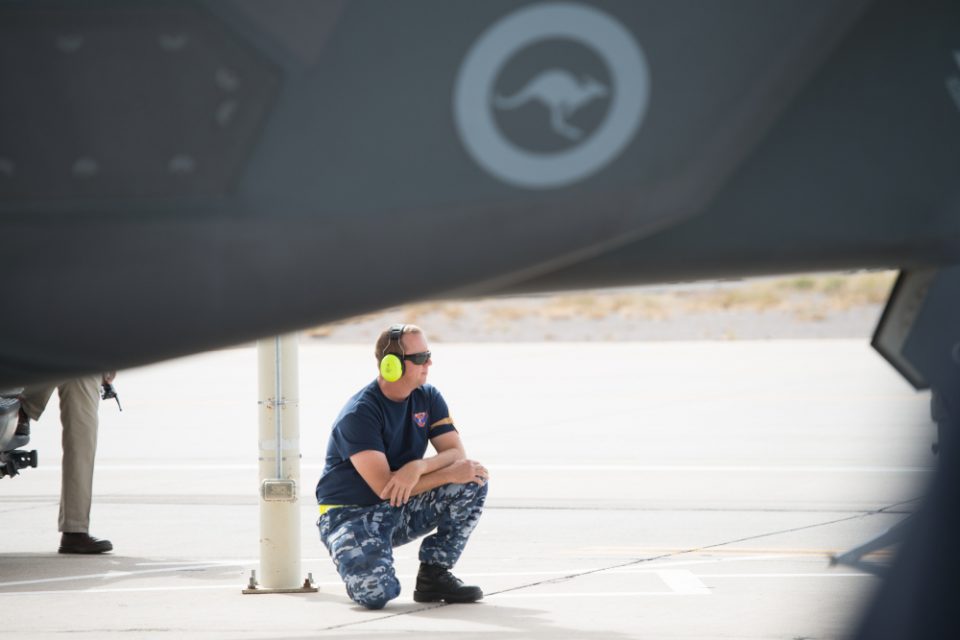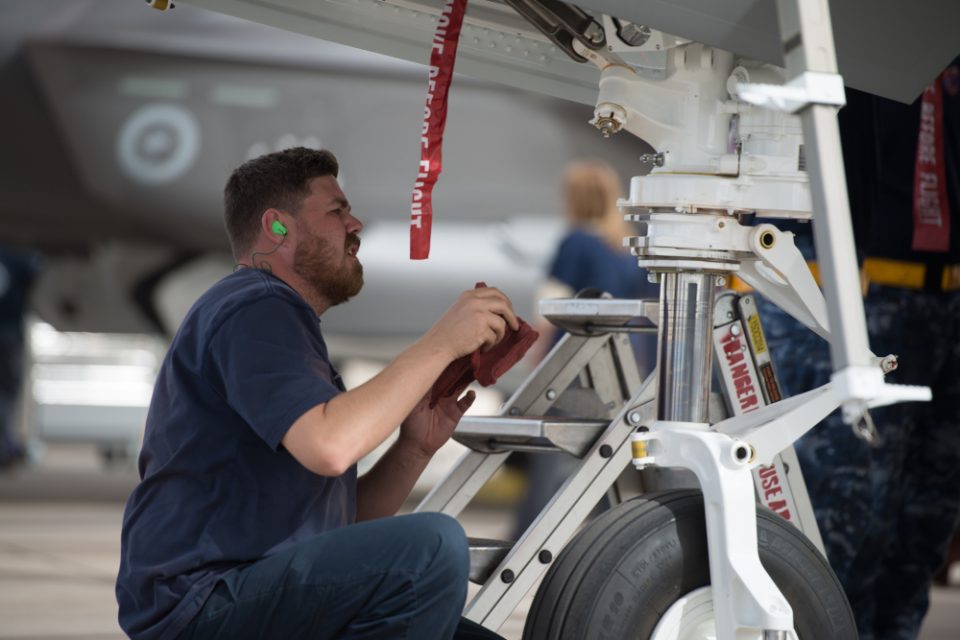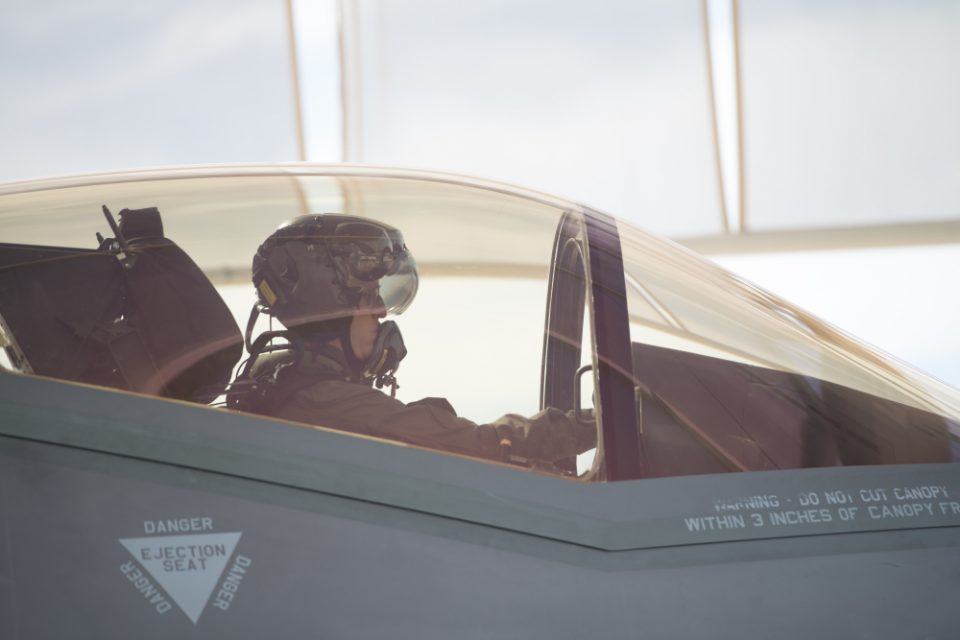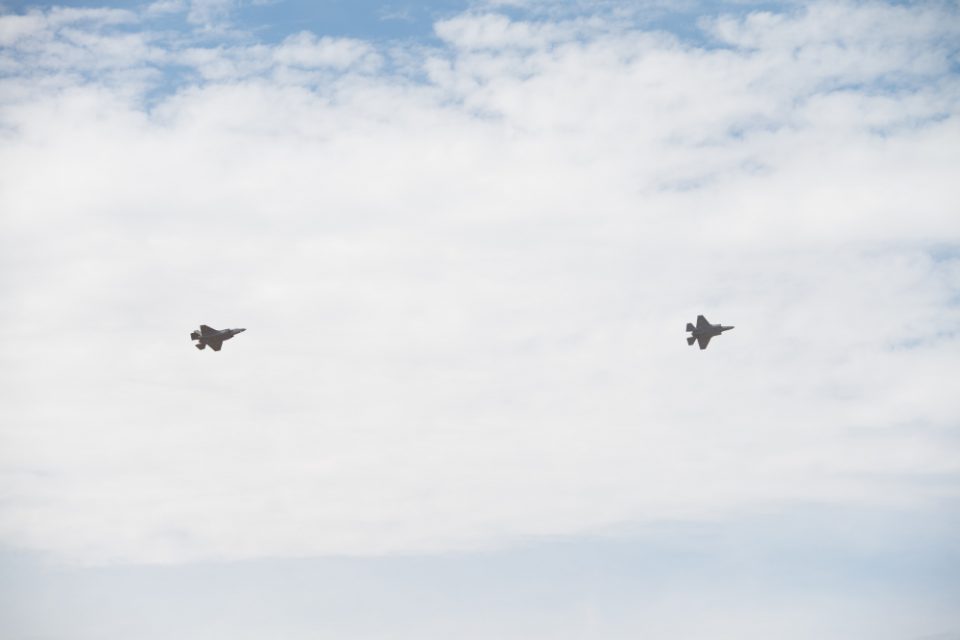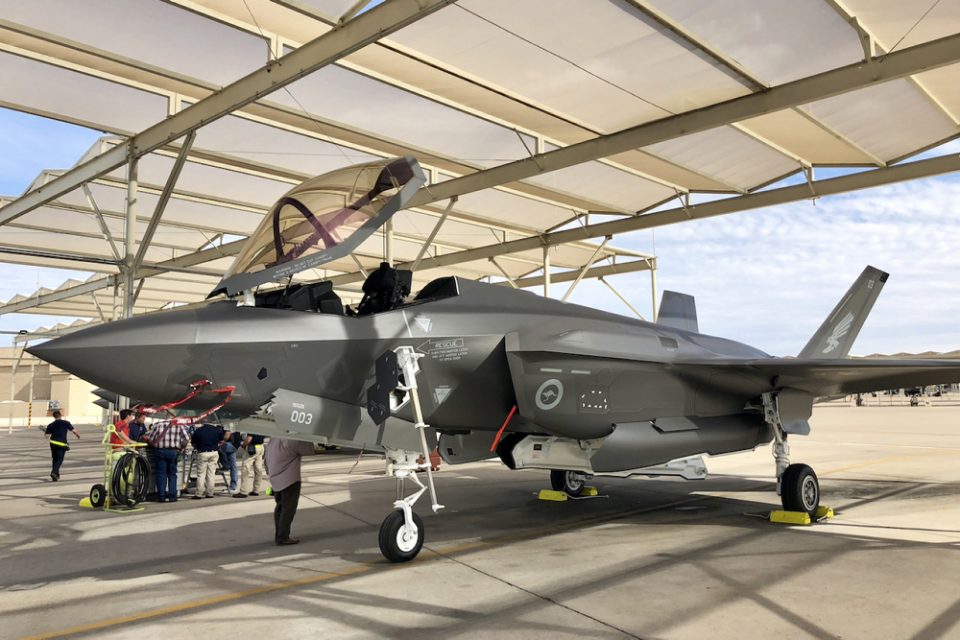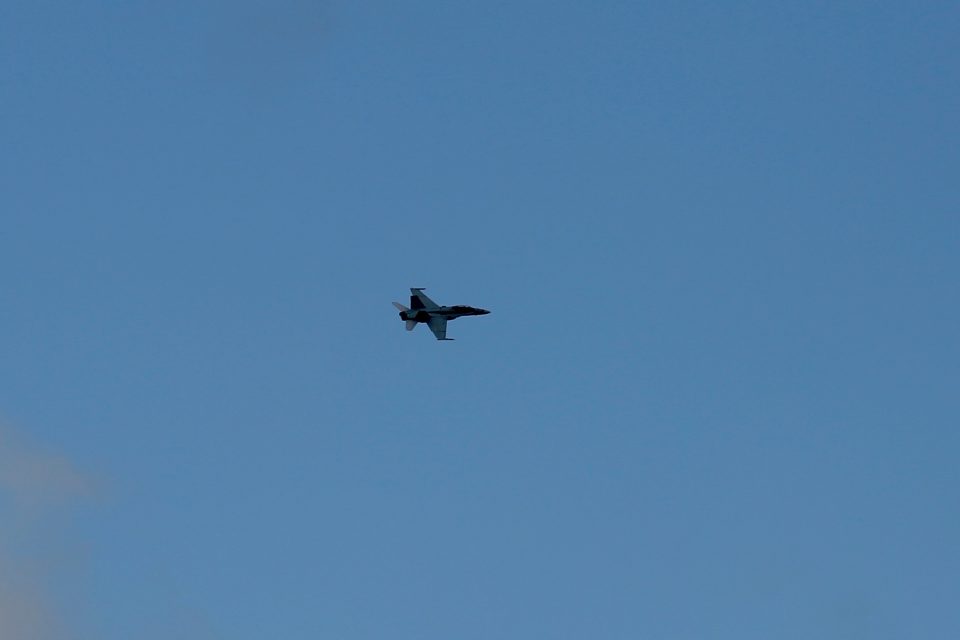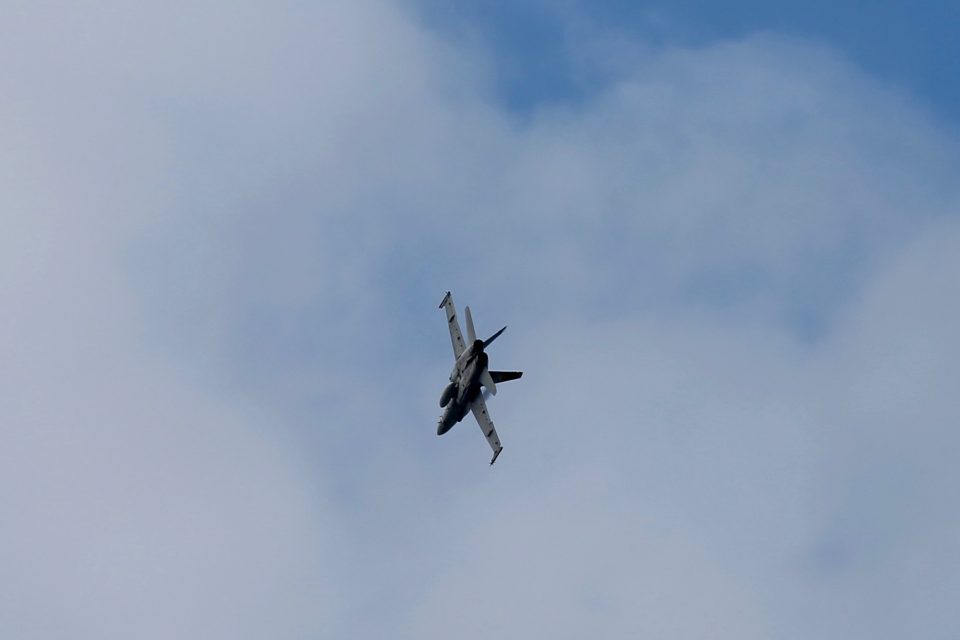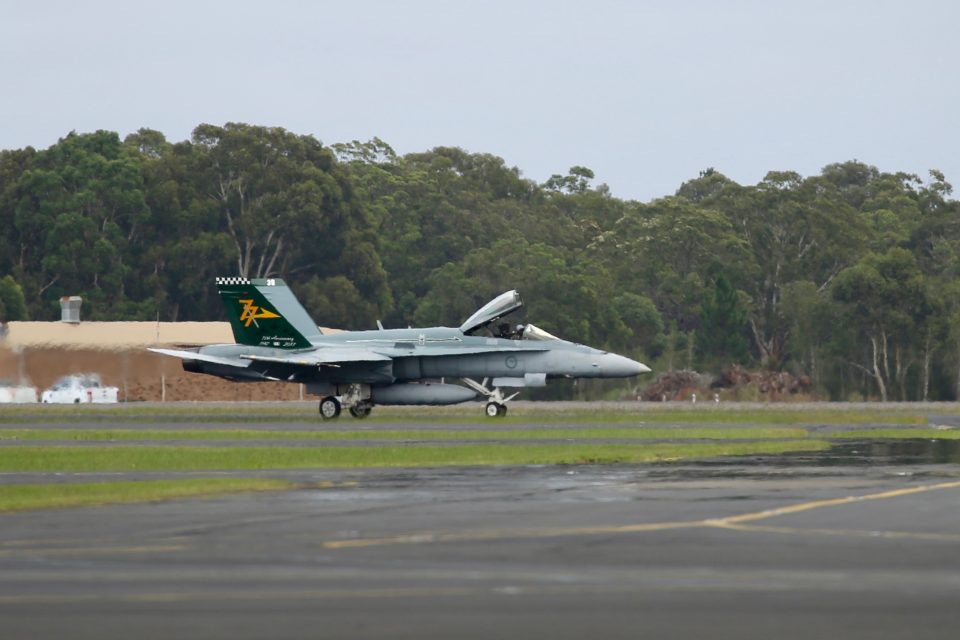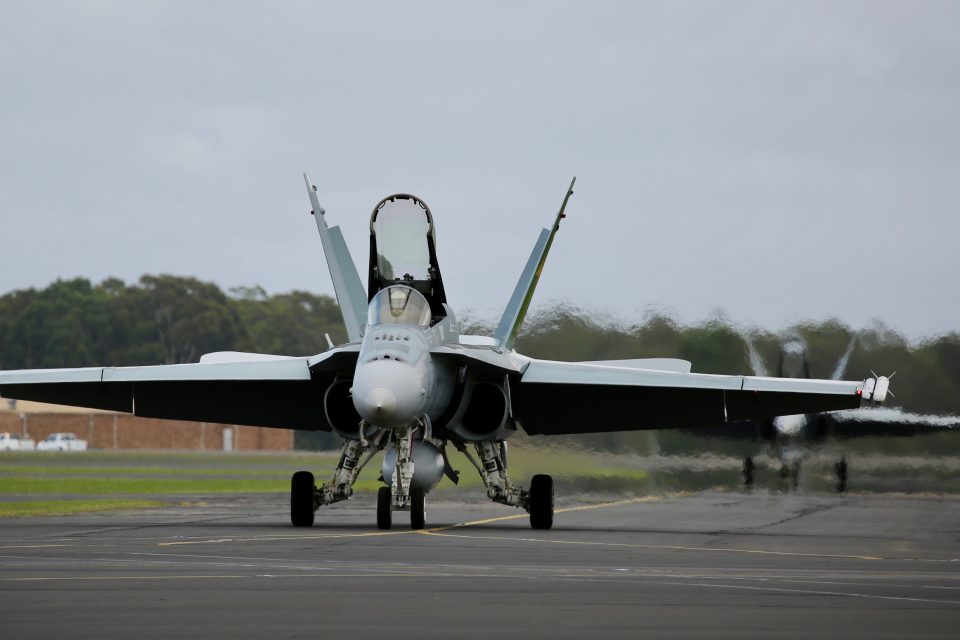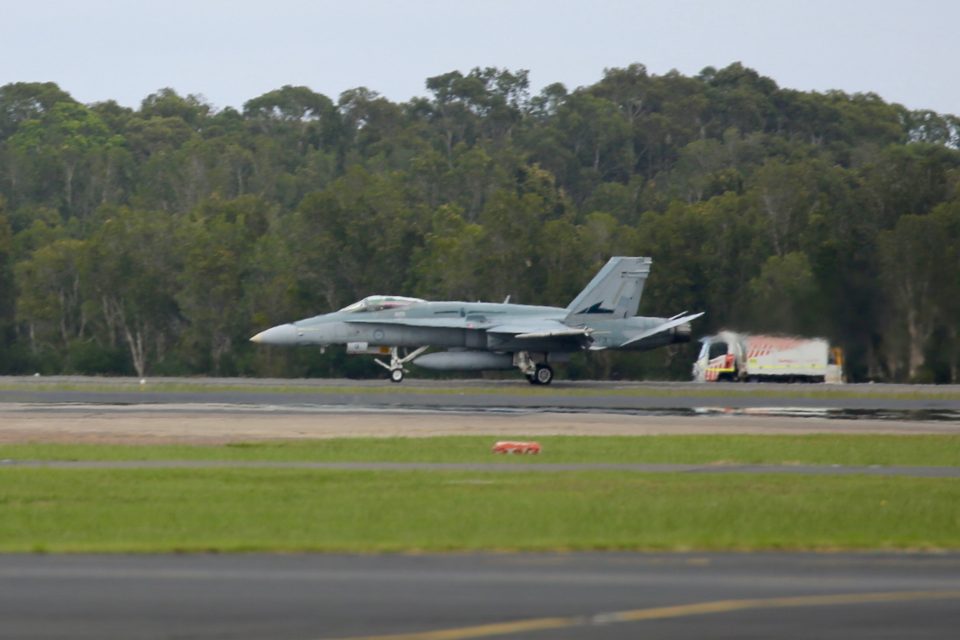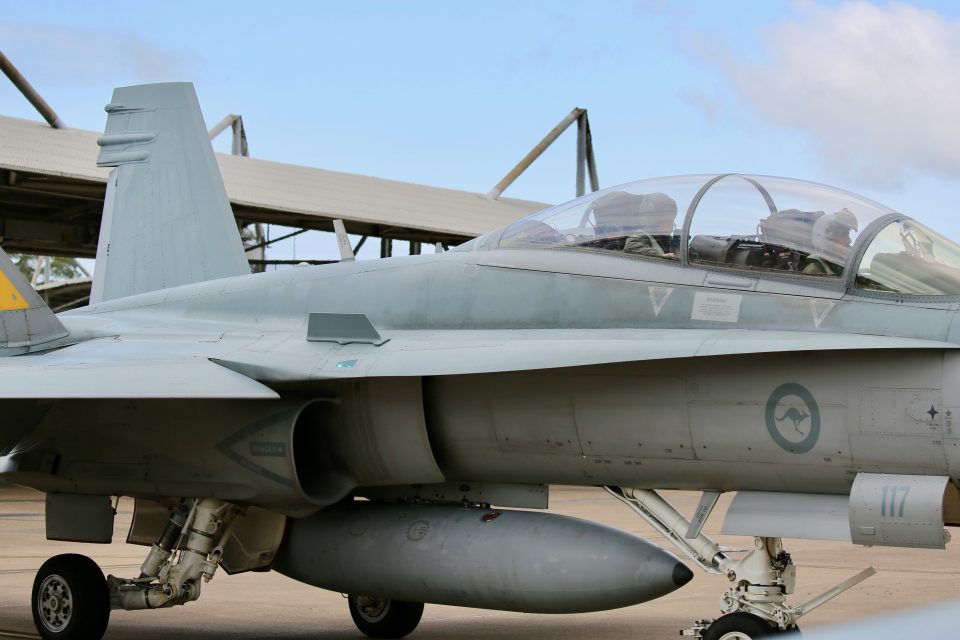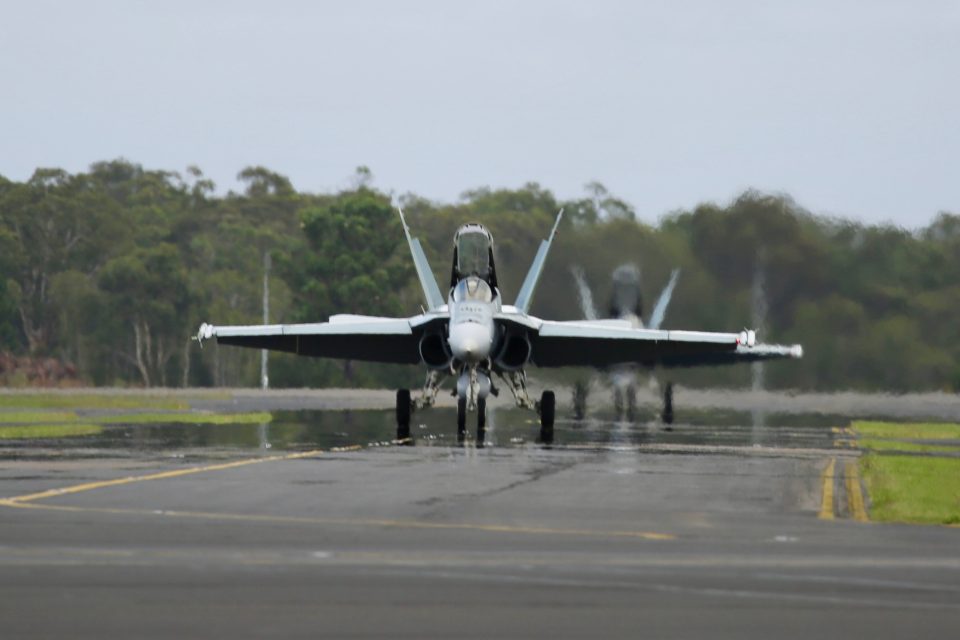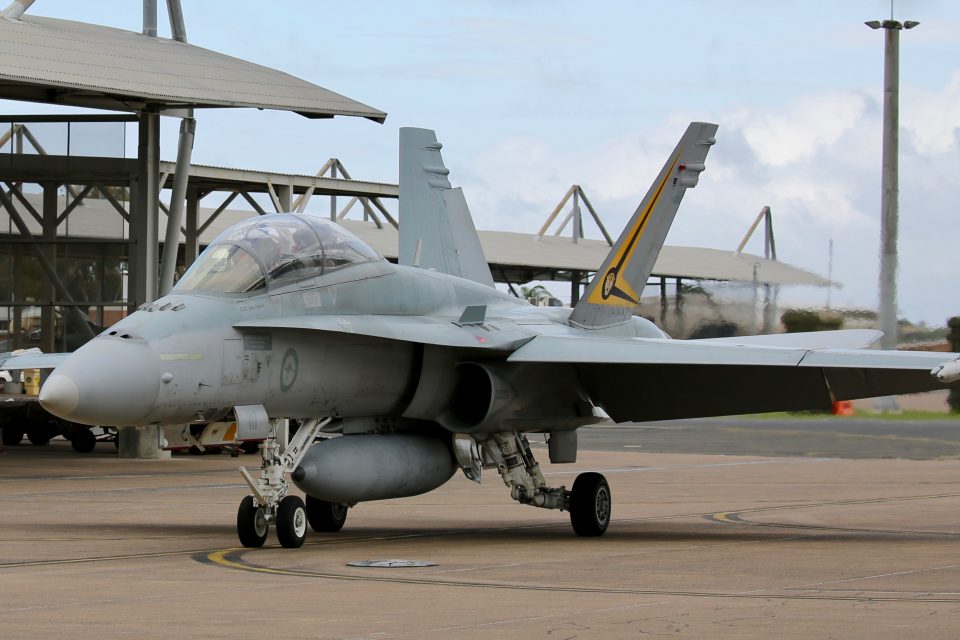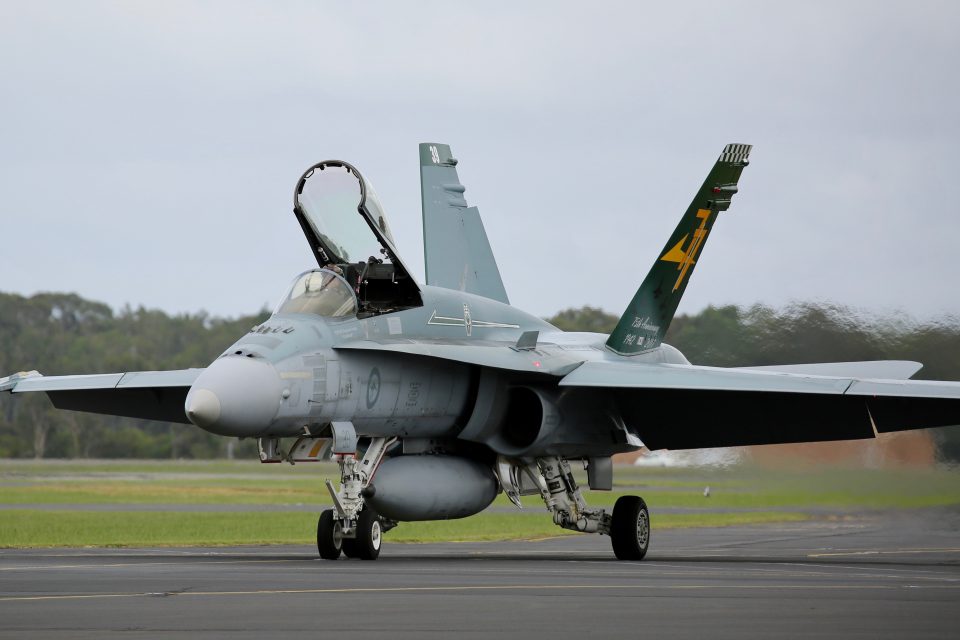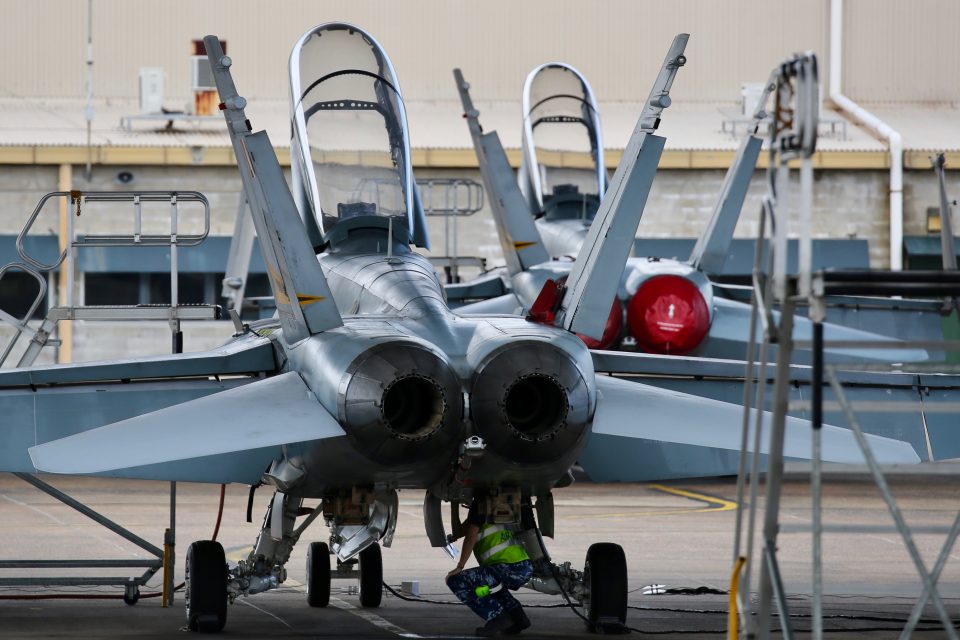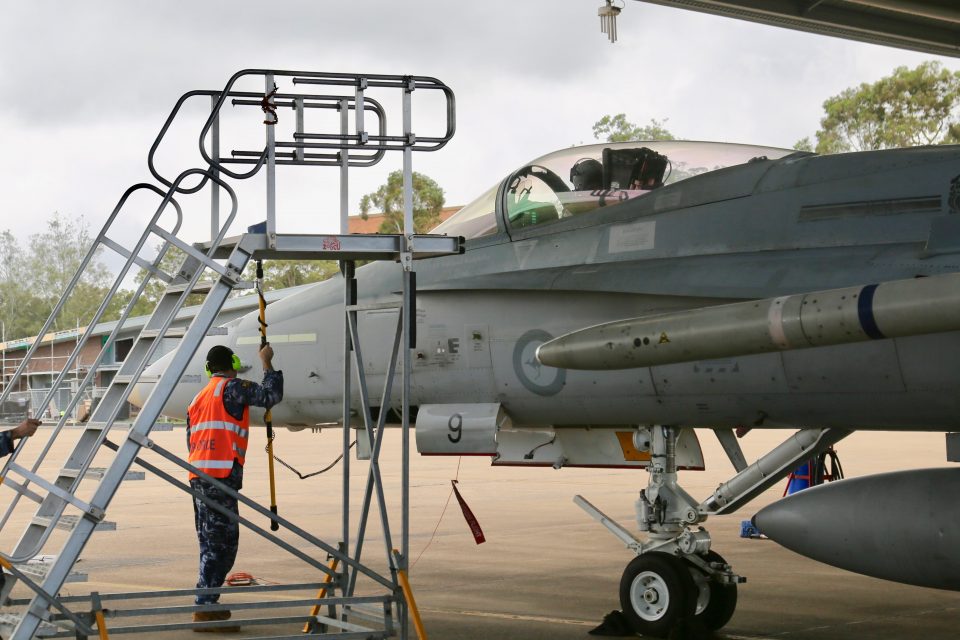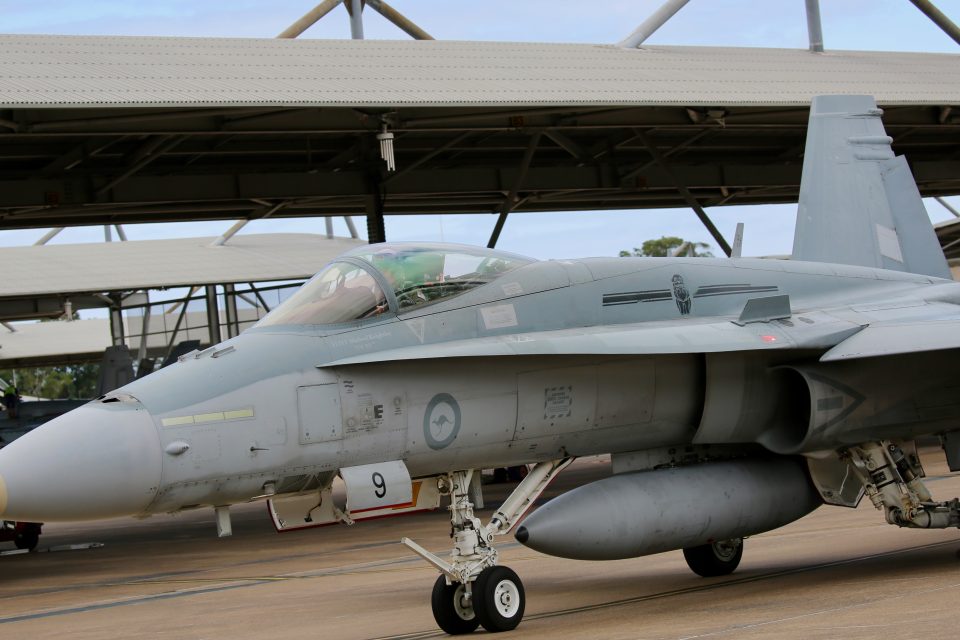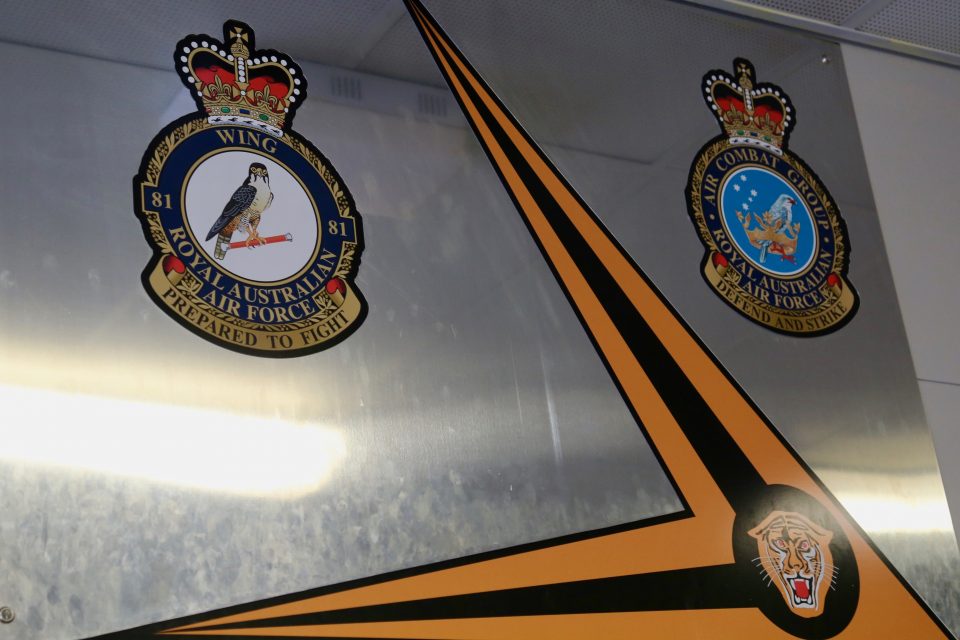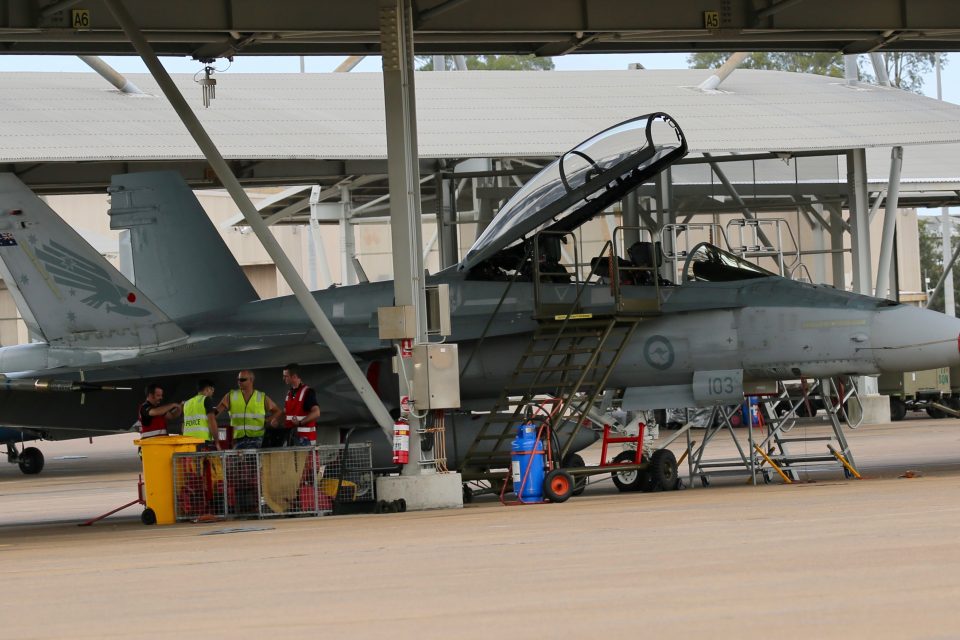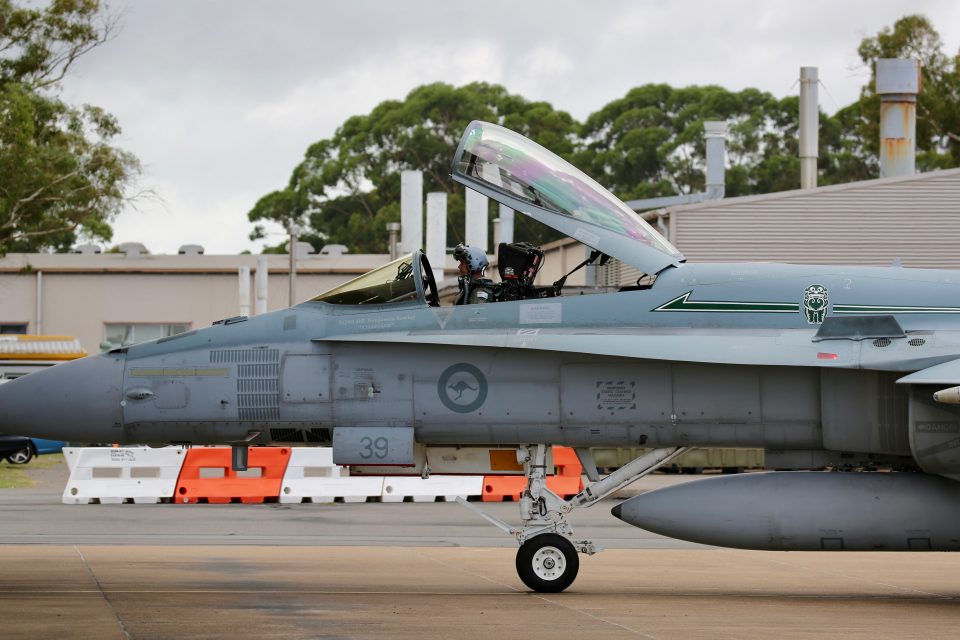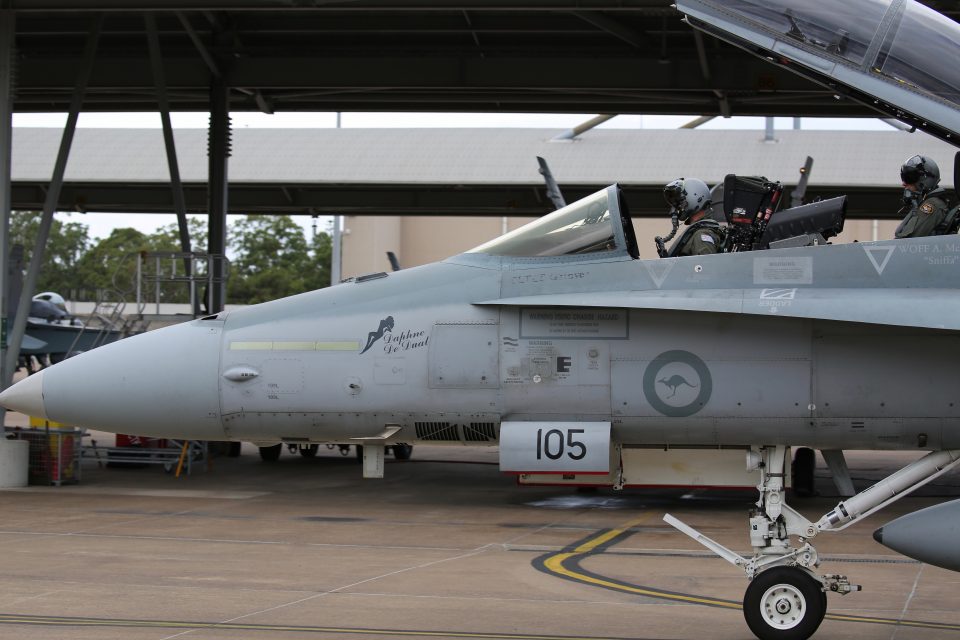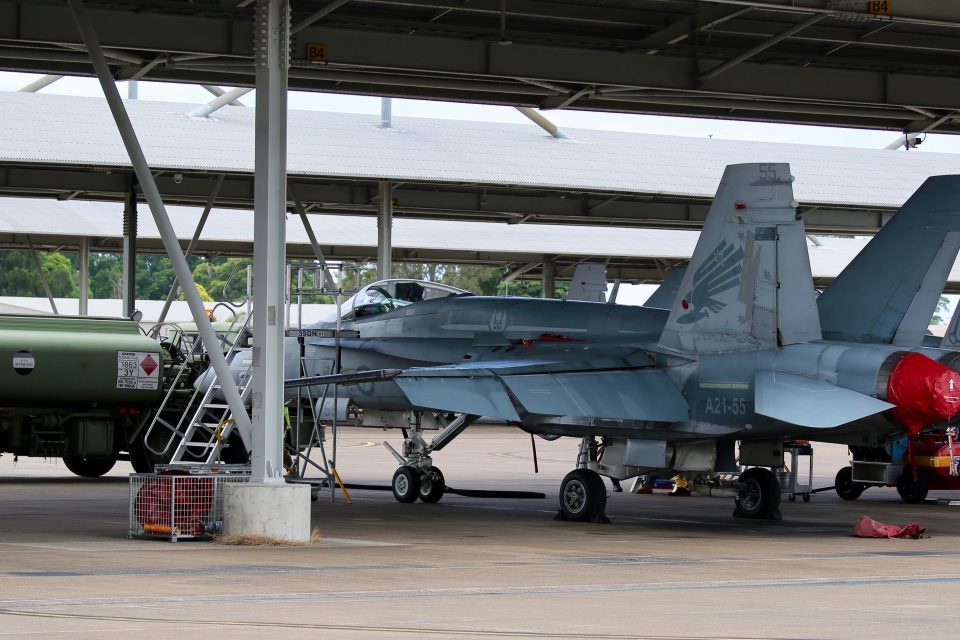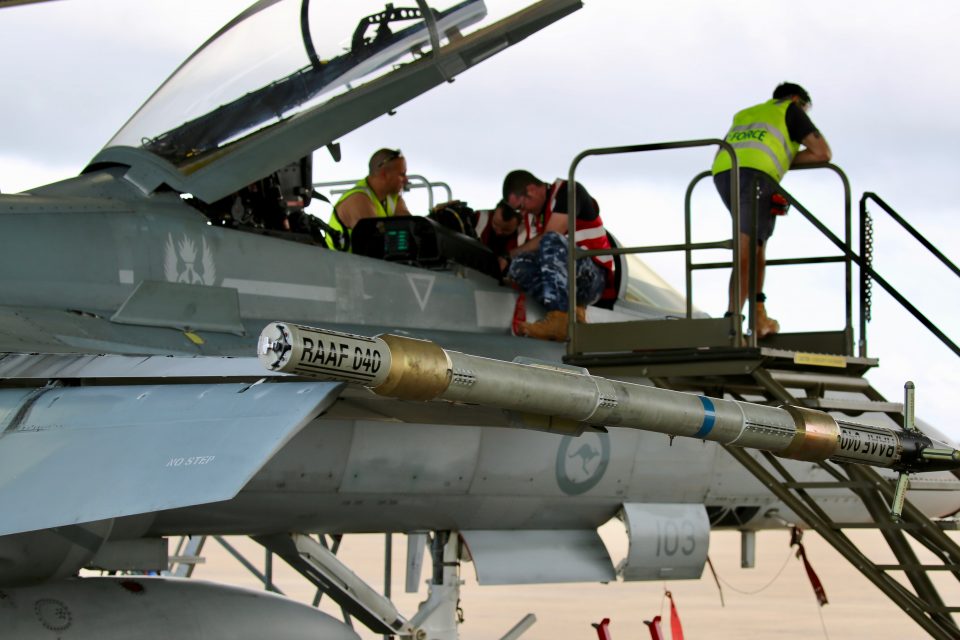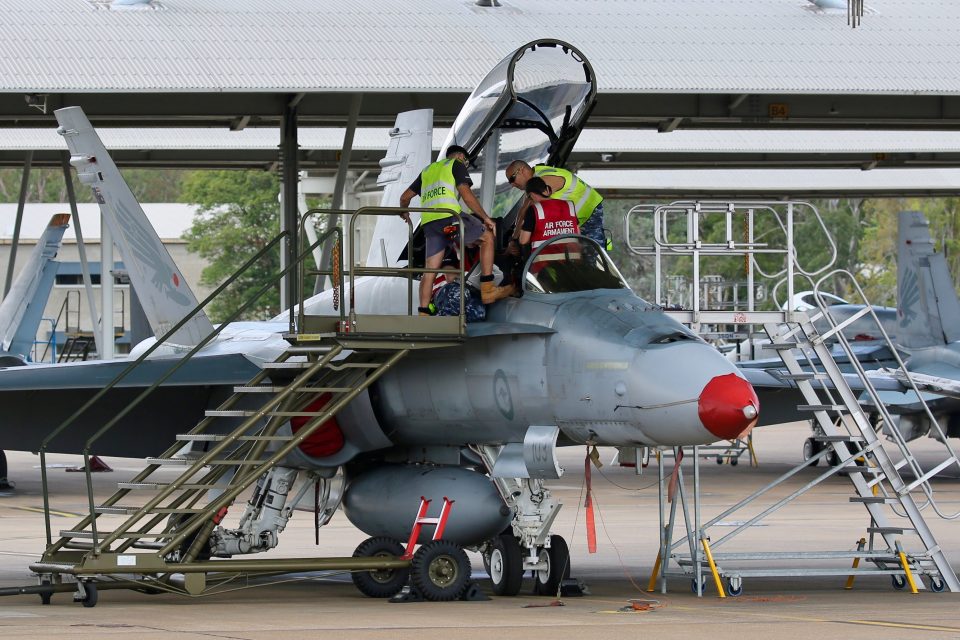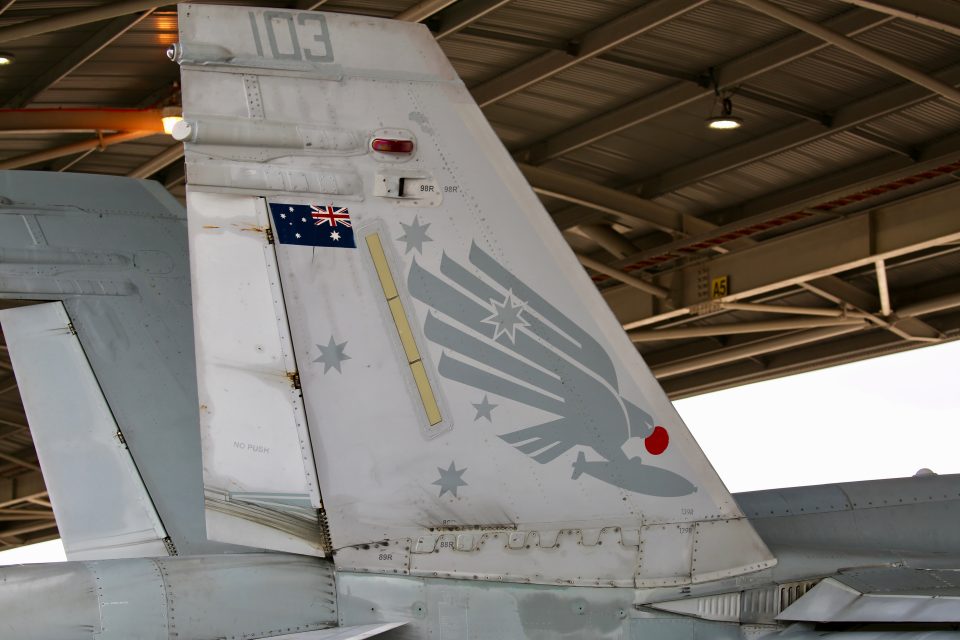By Robbin Laird
“Royal Australian Air Force personnel deployed to Luke Air Force Base in Phoenix, USA prepare the aircraft they will bring home in December 2018. Royal Australian Air Force pilots and maintenance personnel are embedded within United States Air Force units and partnering with Lockheed Martin to prepare for the introduction of Australia’s first fifth-generation air combat capability.”1
With the arrival of Australia’s first two F-35s a little under a week away, the sun is setting on Australia’s legacy fleet of legacy F/A-18 Hornets, with the F-35 marking the beginning of Australia’s technological and capability transformation to a fifth generation air force.
For the Air Force, the F-35’s combination of full-spectrum low observability, from stealth coatings and materials, advanced radar dispersing shaping, network centric sensor and communications suites, combined with a lethal strike capability means the aircraft is the ultimate force multiplying, air combat platform with a projected life of 30 years.
Commander, Air Combat Group Air Commodore Mike Kitcher describes the F-35 as providing a “quantum leap” in capability for the Air Force requiring both the RAAF and the broader ADF to rewrite the operational, tactical and strategic doctrines which have held true for the better part of the last seventy-five years.
“F-35 presents a quantum leap, not only in terms of operational realities, but also technologically. For Air Force in particular, but again also for the wider ADF, F-35 is a catalyst for developing a truly fifth generation force,” Air Commodore Kitcher said…..
Air Force expects that Initial Operating Capability (IOC) for the F-35 to be delivered by 2020, which will see Australia operating two F-35 squadrons, No. 3 Squadron and No. 2 Operational Conversion Unit (2OCU) both of which will be based at RAAF Base Williamtown.
Air Commodore Kitcher said, “While both squadrons will be operations capable, No. 3 Squadron will be Australia’s first full, F-35 squadron that is combat capable by the end of 2020. 2OCU will be focused on the technical and material training for RAAF aircrew and for the training or all technicians and support personnel for the F-35.”
Building on this, Kitcher said, it is expected that by end 2020, Australia will have between thirty and thirty-three F-35s in country. Despite the challenges faced by the F-35 throughout the development process and into the early manufacturing stages, Kitcher remained upbeat about the nation’s transfer from legacy air frames.
“The best way to define the transition from Hornet to F-35 is like the Air Force’s transition from the old propeller driven Mustangs to the early jet powered aircraft in the Meteor. I am sure we will find some lessons and some challenges, people forget that is to be expected in the roll out and acceptance of any new technology, not least of all an aircraft as advanced and complex as the F-35,” Kitcher explained.2
And in an article by the same author, Stephen Kuper, published on Defence. Connect on December 6, 2018, the author marked the countdown.
In just four days, Royal Australian Air Force Base Williamtown will receive Australia’s first two F-35A Joint Strike Fighters (JSF) and the atmosphere is electric ahead of their arrival.
Williamtown will eventually be home to 56 JSFs, and the RAAF has been working feverishly ahead of the arrival of the first pair.
The F-35A Operational Precinct has been developed specifically to house Australia’s new jets, and at the current time is “more than capable” of receiving the first two JSFs.
Part of that project involved the extension of the runway from 8,000 feet to 10,000 feet, which not only allows extra safety for the pilots but will help reduce noise due to the jets using their afterburners less.
There will also be a combined 3 and 77 Squadron Headquarters, which will help “exercise effective command and control of F-35A operations and to prepare for exercises and deployments”.
Security for the base has also received a huge facelift, worth nearly a billion dollars.
Greater security measures have been introduced, including upgrades to the perimeter of the base as well as individual facilities.
At one point there were over 900 contractors working on-site, although that number dropped after the main exterior buildings were completed.
As it stands, the facilities are still yet to be fully completed, but are capable of holding the aircraft due to be delivered by the end of 2019.
Group Captain Peter Cluff, Base Commander at Williamtown, estimated that by the end of 2019, the upgrades at the base would be completed entirely.3
Earlier this year, we visited RAAF Williamtown and discussed the way ahead for the base with the F-35 transition with Air Commodore Kitcher.
During a visit to Royal Australian Air Force (RAAF) Base Williamtown in March 2018, we had the chance to talk with the new commander of the Air Combat Group, Air Commodore Kitcher.
RAAF Williamtown is undergoing significant infrastructure modernization as it prepares for the F-35A and as the RAAF’s Air Combat Group (ACG) spearheads the transition in the air combat force.
They are undergoing a quite rapid transition from a legacy aircraft to a fifth generation force in terms of completely retiring their Hornets in favor of acquiring their F-35As.
ACG is moving from flying a legacy Hornet force along with Super Hornets and the E-7 (Wedgetail) to one in which Growlers, E-7s, Super Hornets and the F-35As are integrated to shape the new generation air combat capability.
This is a unique combat capability and represents a shift to the RAAF working with the USAF alongside their continuing long standing and excellent working relationship with the USN.
From this, the RAAF will shape something a bit different than the US forces will fly themselves.
“We’ve had a long and very fruitful relationship between the Royal Australian Air Force and the US Navy.
“We have flown the P-3 and now the P-8.
“We have operated the Classic Hornet since, since 1986, and more recently, the Super Hornet, and the Growler.
“It’s been a long and enduring relationship, which has proved beneficial to both, and certainly we couldn’t have got where we are with Super Hornet and Growler without the outstanding support the US Navy provided us.
“With the F-35A we’re expanding our relationship with the US Air Force.
“And clearly standing up our squadron at Luke AFB and working with the USAF has been beneficial and a key driver to this evolving relationship.”
Building a 21stCentury Air Combat Infrastructure
During a visit to Williamtown, two years ago, I visited the base with an eye to looking at infrastructure changes.
Those changes were just charging with one of the first F-35A buildings just being built.
Now two years later, infrastructure is being built up significantly and we toured the base to see many of these changes.
Air Commodore Kitcher talked about the changes which are designed to augment the ability of the base to operate with the new aircraft but also to enhance the ability to command the evolving force.
ACG Head Quarters is located in a building that was a former battery shop. Now a modern building to support the command, as well as other Headquarters and commands from RAAF Williamtown is being built.
The base is being wired to handle the advanced data systems being established with a clear eye to efficiency, effectiveness and security.
“We are seeing two basic types of change.
“The first involves the base refreshing itself. This involves base redevelopment with the base infrastructure being renewed and replaced, including runway and taxiway extensions.
“The second involves building the infrastructure and support facilities for the F-35A squadrons which will train and operate from the base.”
The OBISC or On Board Information System Center for the F-35A is built with personnel working in the Centre.
The Number 2 Operational Conversion Unit (2OCU) building is largely complete and will support the training squadron but will also house Number 3 Squadron (3SQN) when they return from the US at the end of 2018.
“3SQN will come back to Australia at the end of the year and work on the Australian Validation and Verification Activities for F-35A.
“By the end of 2020, they will move into their own facilities and the training unit (No 2 Operational Conversion Unit (2OCU)) ) will move into the buildings vacated by 3SQN.
“2OCU will look after all aircrew and maintenance training for the RAAF F-35 capability.”
By the end of 2020, there will be over 30 F-35s at the base “which is initially sufficient aircraft for 3SQN and 2OCU, and that’s our Initial Operating Capability number of aircraft.”
The basic change from Hornet to F-35A at the base is driven by the data rich nature of the aircraft and the security changes associated with handling and processing the data.
From this point of view, working with Super Hornets has been part of the overall transition as well as it introduced the RAAF to the challenge of handling data differently from our legacy aircraft.
“We need to be able to port various security grades of data into and around the facilities on the base.
“AF learnt many lessons when introducing the Super Hornet and we will build on managing those sensitivities for the introduction of the F-35A.”
The Importance of Luke AFB in the F-35 Global Enterprise
The F-35 community has been stood up at Luke AFB with various nations training together at the facility for the initial cadre of pilots and maintainers generated by the Luke AFB training facilities.
“We have been impressed by the approach and attitude of the USAF trainers as we are working closely with them in training 3SQN aircrew and maintainers.
“And we have been extremely impressed by the attitude from USAF leadership which allowed RAAF personnel to fully integrate the with the US folks in the 61stFighter Squadron at Luke.
“It would have been very easy to have two teams just working out of the same squadron, but that’s exactly what the USAF did not do..
“The USAF and RAAF have worked in an integrated manner, which the RAAF is extremely thankful for.
“For example, RAAF personnel have fulfilled key squadron executive positions such as flight commander.”
Transition Dynamics for the RAAF
Air Commodore Kitcher highlighted the strategic goal of ACG with regard to the transition as follows: our challenge is to actually transition to the new capabilities in minimum time whilst ensuring we keep the overall force healthy.”
Mission Ready F-35s Delivered to RAAF from SldInfo.com on Vimeo.
They have an aggressive schedule with regard to F-35A transition.
They are transitioning from four Hornet to four F-35A squadrons in just four years.
“That is a more rapid change, and a more aggressive schedule than any other F-35 user is on track to do.”
And in that transition, a key objective is establishing a “healthy training system in Australia.”
And this training system will be supporting F-35As at Tindal Airbase in the Northern Territory as well.
That base is undergoing a significant infrastructure rebuild as it will receive F-35As early next decade as well.
Incorporating the F-35A, the Super Hornets, the Wedgetails and the Growlers into an integrated air combat force is the broader transition facing the RAAF.
The challenge, which is a good one to have from the standpoint of Air Commodore Kitcher, is to learn how to fight effectively with a fifth generation enabled force.
“Learning to fly the F-35A is not the hard part.
“Working the mission command piece is a key driver of change for sure.
“And although we are working closely with the USN and the USAF, we will do things differently as we integrate our unique force package and adapt it to Australian conditions.”
Another part of the transition is working the sustainment piece.
“We need to ensure that we have the required number of experienced and capable technicians to generate the number of sorties we need to generate, and the sortie rate is supported by the engineering and logistics systems.”
And we discussed another key aspect of combat transition, namely learning or shaping the C2 piece of the force evolution.
What can be overlooked with regard to the F-35 is that it is many ways part of the transition to distributed C2 rather than being viewed as a classic ISR capability, whose function is to distribute data widely in the battlespace.
Given the challenge of operating in a contested environment, within which adversary’s will seek to disrupt the ISR flows which the US and the allies have been able to generate within previous land centric wars, a key challenge will be to take decisions in a contested environment.
As Air Commodore Kitcher said: “With the fifth generation aircraft, there are key missions they need to perform themselves and just do it, potentially without proliferating information support to the broader force.
“Everyone’s going, “But I need the information that can come off the aircraft.
“We need to be able to say no you don’t, in this particular case, you don’t need that information right now, you may get it later.”
“It is about sorting out and collectively agreeing, from the tactical squadron to the higher HQ’s, what we should choose to do versus what we can do,” Air Commodore Kitcher said.
And that is a good way to end.
Clearly, Air Commodore Kitcher and his team are focusing on what needs to be done to deploy, develop and shape a fifth generation enabled force and prioritizing and executing those needs to get the job done.
Editor’s Note: The final slideshow are shots of classic hornets operating at Williamtown Airbase the day of our visit in March 2018 and are credited to Second Line of Defense.
Footnotes
- Australian Department of Defence, December 4, 2018.
- Stephen Kuper, December 4, 2018.https://www.defenceconnect.com.au/strike-air-combat/3251-f-35-countdown-changing-the-way-the-air-force-flies-fights-and-wins
- Stephen Kuper, December 6, 2018. https://www.defenceconnect.com.au/strike-air-combat/3269-f-35-countdown-raaf-base-williamtown-buzzing-ahead-of-arrival


